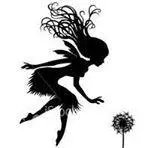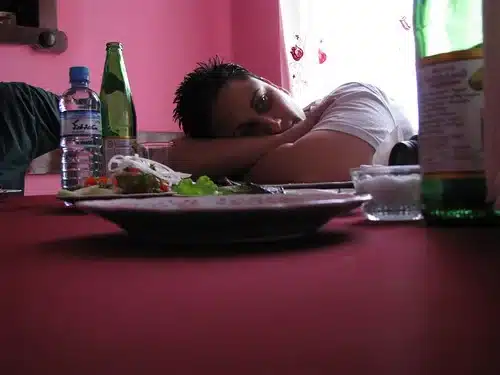קלרה שלי הוא ספר הביכורים של בירי רוטנברג. הוא ספר מסקרן. יש בו את שילוב בין ההוויה המשפחתית הפרטית לזו הציבורית באמצעות שילוב מגוון קטעי דיאלוג בין גיבורת הספר לאימו של היטלר, קלרה.
הספר מרובד וניתן למצוא בו ארבעה רבדים מרכזיים: חווית הילדות של גיבורת הספר שהיא דור שני לאב ניצול שואה שהטמיע בה שינאה עזה וסלידה מהגרמנים וכל מה שגרמני. כאשר היתה בת 15, אימא שלה נפטרה מסרטן השד. אז, עולמה הצטמצם למערכת יחסיה עם אביה שכפה עליה את התפיסות שלו ביחס לגרמנים ובאופן כללי על החיים. בכדי להקיא את כל השינאה הזו, היא מאמצת חברה דמיונית, גרמנית בשם קלרה, והיא פורקת את התחושות שלה ביחס לשואה, לאביה, לעולם באמצעות כתיבת דיאלוגים עם הדמות הזו.
מאוחר יותר יסתבר שמדובר בקלרה, אימו של היטלר.
ברובד השני, גיבורת הספר, אישה חסרת שם נשואה, שבתחילת הספר ילדה את הבן הראשון שלה. לידה היא אירוע מכונן בחיי אישה וכך גם אירע בחייה של הגיבורה. יחד עם זאת ההיסטוריה המשפחתית שלה מצטרפת למערכת יחסיה עם בן זוגה, והלידה מערערת את שיווי המשקל בין בני הזוג.
כל האירוע של התערערות מערכת היחסים לא ברור. נראה שהיא ובן זוגה הולכים ומתרחקים עד שכשהילד בן שלוש הם נפרדים ומתגרשים. הפרידה הזו מלווה בצער וכאב לב. ממש התרסקות נפשית. בצוק העיתים גיבורת הספר, שוב מגייסת את קלרה, אימו של היטלר, לסייע לה לפענח את העולם ואת חוויית הזוגיות הכושלת שלה ובעיקר את התחושות והפחדים שלה לגבי בנה.
ברובד השלישי, זהו סיפורה של קלרה פלצל, עקרת בית שגידלה את ילדיה באהבה ובתשומת לב אימהית למרות שהיתה נשואה לבעל אלכוהליסט ואלים שנהג לאנוס אותה. החלק הזה שמביא מהביוגרפיה של היטלר ומנסה לעמוד על מערכת יחסיה של קלרה אימו איתו, היה המעניין ביותר ולטעמי הוא גם לב הספר.
"פינקת אותו, קלרה. ממש הגזמת. הרבה פינוקים מובילים ליצירתה של מפלצת. תראי למשל מה קרה ביום הפלישה של בעלות הברית לנורמנדי. מה עשית, קלרה? כוחות הברית פולשים בחמש בבוקר, מיליון חיילים מאנגליה, קנדה וארצות הברית שוטפים את נורמנדי באנגלית רהוטה, טנקים, טילים ותחמושת כבדה. ואדולף? אדולף ישן. החיילים, המפקדים, הגנרלים הבכירים, כולם פוחדים להעיר את הנסיך המפונק שלך. החיילים הגרמנים שהיו פרושים לאורך החופים לא יכלו להגיב כי אדולף ישן. מזיל ריר על הכרית. בזמן הזה הם משתינים בתחתונים רגע לפני שמישהו באנגלית מרוקן עליהם מחסנית. אדולף החמוד שלך, שבטח הערת כל בוקר עם שוקו חם, התהפך לצד השני וחיבק את אווה כמובן. אדולף ישן עד השעה שתים־עשרה בכל יום. התעורר רק ביקיצה טבעית. עשרות אלפי חיילים מתו בזמן שאדולף חלם. על מה אדולף חלם? אולי על הסינר שלך שנהג להסתתר מאחוריו מנחת זרועו של אביו? אולי חלם על השטורדל תפוחים או אגסים שלך? אני לא רוצה באמת לדעת. אולי אפילו מאות אלפים מתו בזמן שאדולף חלם."
הסופרת מנסה לשרטט את הכרוניקה שהובילה להתפתחותו של רוצח ההמונים. היא תוהה על מערכת קשריו עם אימו ועל טיב היחסים המשפחתיים שהובילו אותו לביצוע זוועות אלימות וקשות. האם הזוועה גלומה בפינוק האימהי או ביחס של אביו החורג המתעלל? האם התקיפות המיניות שהיו נהוגות במשפחתו עיצבו את אופיו? ועד כמה תבנית חייו הושפעה ממערכת היחסים המשפחתית בין אביו החורג לאימו?
ברובד הרביעי, הדמות הראשית היא אישה, אימא לילד קטן, רעיה ואז גרושה. היא זועקת את תיסכוליה בניסיון למצוא את הדרך והמקום שלה בעולם. ברובד הזה, הסופרת מתארת תהליך קשה וכואב, שמלווה במרד בעקרונות שמרכיבים את הזהות האישית שלה. בהעדר יסודות חזקים, התהליך מלווה בהתפרקות וחיבור נפשיים. בתהליך הפירוק והחיבור, מסייעת לה הדמות הבדיונית של קלרה והוא החל עוד כשהיתה צעירה לאחר פטירת אימא שלה.
לצערי, הרובד הזה פטפטני, קלוש וכולל אירועים שחלקם לא מעניינים. את האירועים המעניינים, כמו אירוע האלימות שחוותה בזוגיות שלה, היא לא מפתחת מספיק ולנוכח הפטפטת המיותר באירועים אחרים, תמוהה מדוע הסופרת מותירה אותו עמום ולא מבואר. לא את השפעתו על הדמות הראשית כאישה ולא על חייה של הדמות הזו.
תחושת הפספוס וההחמצה מתגברת לנוכח הניסיון לקשור בין חייה של הדמות, תסכוליה וכאבים שלה כאישה, כאימא ובעיקר כאישה שסבלה מאלימות לבין קלרה פלצל. מראש, הנסיון הזו נדון לכישלון, זו תקופה אחרת, תנאי חיים אחרים ומאוד קשה להשליך מהאירועים שעברו על קלרה כאישה לאירועים שעוברים על הדמות. הניסיון הזה אכן נכשל וכאשר הדמות הנשית בספר מגיעה לסוג של מודוס ויוונדי, לא בדיוק ברור איך היא משיגה אותו רק נאנחתי בהקלה "ברוך השם".
לטעמי זה החלק החלש ביותר בספר והוא היה זקוק ליד עורכת אסרטיבית חזקה ומובילה.
סה"כ כפי שכתבתי הספר סיקרן אותי. הכריכה יפיפיה (יש לשבח את הוצאת שתיים על הכריכות המושקעות והיפיפיות) והתכנים מבטיחים. הביצוע היה לא מספיק טוב ולא מספיק מזוקק ביחס לרעיונות שעומדים בבסיס הספר.
קלרה שלי/ בירי רוטנברג
הוצאת שתיים, 2024, 200 עמ'
דירוג SIVI –
איכות אודיו –

Beery Rotenberg's debut book is intriguing. It combines private and public family existence through dialogue between the protagonist and Hitler's mother, Clara.
The book is a complex narrative with four distinct layers: the formative childhood of the heroine, a second generation to a Holocaust survivor father who instilled in her a deep-seated aversion to all things German. At 15, she lost her mother to breast cancer, leaving her world to revolve around her father's uncompromising views. To cope with this emotional turmoil, she created an imaginary friend, Clara, a German, to whom she could express her feelings about the Holocaust, her father, and the world through a series of written dialogues.
Later, it turns out that it is Clara, Hitler's mother.
In the second layer, the heroine, an unnamed married woman, gives birth to her first son at the beginning of the book. This birth, a significant event in a woman's life, also serves as a point where her family history intersects with her relationship with her partner. More importantly, the birth disrupts the delicate balance that the couple had maintained.
The theme of sorrow and heartache that accompanies the separation needs to be emphasized. As the protagonist and her partner grow further apart, the birth of their child seems to be a catalyst. The subsequent separation and divorce are not just legal processes, but a deeply felt emotional upheaval, a mental breakdown. At this critical juncture, the book's heroine, in her quest for understanding, turns to Clara, Hitler's mother, to help her navigate the complexities of her failed marriage, her feelings, and her fears for her son.
In the third layer, this is the story of Clara Peltzel, a housewife who raised her children with motherly love and attention despite being married to an alcoholic and violent husband who used to rape her. This part, which comes from Hitler's biography and tries to establish Clara's mother's relationship with him, was the most interesting and, in my opinion, is also the heart of the book.
The writer tries to outline the chronicle that led to the development of the mass murderer. She wonders about his relationship with his mother and the nature of the family relationship that led him to commit violent and severe atrocities. Is the horror embodied in the maternal indulgence or the attitude of his abusive stepfather? Did the sexual assaults that were customary in his family shape his character? And to what extent was the pattern of his life influenced by the family relationship between his stepfather and his mother?
In the fourth layer, the main character, a woman, a mother, a wife, and then a divorcee, is depicted in a state of emotional turmoil. She cries out in frustration, struggling to find her place in the world. The writer skillfully portrays the difficult and painful process she undergoes, which is marked by a rebellion against the principles that define her. This emotional journey, without a firm foundation, leads to a process of mental disintegration and reconnection. In this journey of disassembly and reassembly, the fictional character Clara, who has been with her since her mother's death, plays a pivotal role.
Unfortunately, this layer is chatty and weak and includes events, some of which could be more interesting. The exciting events, such as the incident of violence she experienced in her relationship, she does not develop enough, and given the unnecessary chatter in other events, it is puzzling why the author leaves them vague and unexplained—neither his influence on the main character as a woman nor on that character's life.By developing these exciting events, the narrative has the potential to become more engaging.
The sense of loss and missing out increases given the attempt to connect the character's life, her frustrations and pains as a woman, as a mother, and especially as a woman who suffered violence and Clara Peltzel. In advance, this attempt was doomed to failure; this is a different time and living conditions, and it is challenging to extrapolate from the events that happened to Clara as a woman to the events that happened to the character. This attempt did fail, and when the female character in the book reaches a kind of modus vivendi, it's not exactly clear how she achieves it; I just sighed with relief, "Thank God."
This is the book's weakest part, and it needed the hand of a robust and assertive editor.
All in all, as I wrote, the book intrigued me. The cover is beautiful (publishing two should be commended for the elaborate and beautiful covers), and the contents are promising. However, the execution needed to be better, and more refined about the ideas that are the basis of the book.
לגלות עוד מהאתר Sivi's Books
Subscribe to get the latest posts sent to your email.

